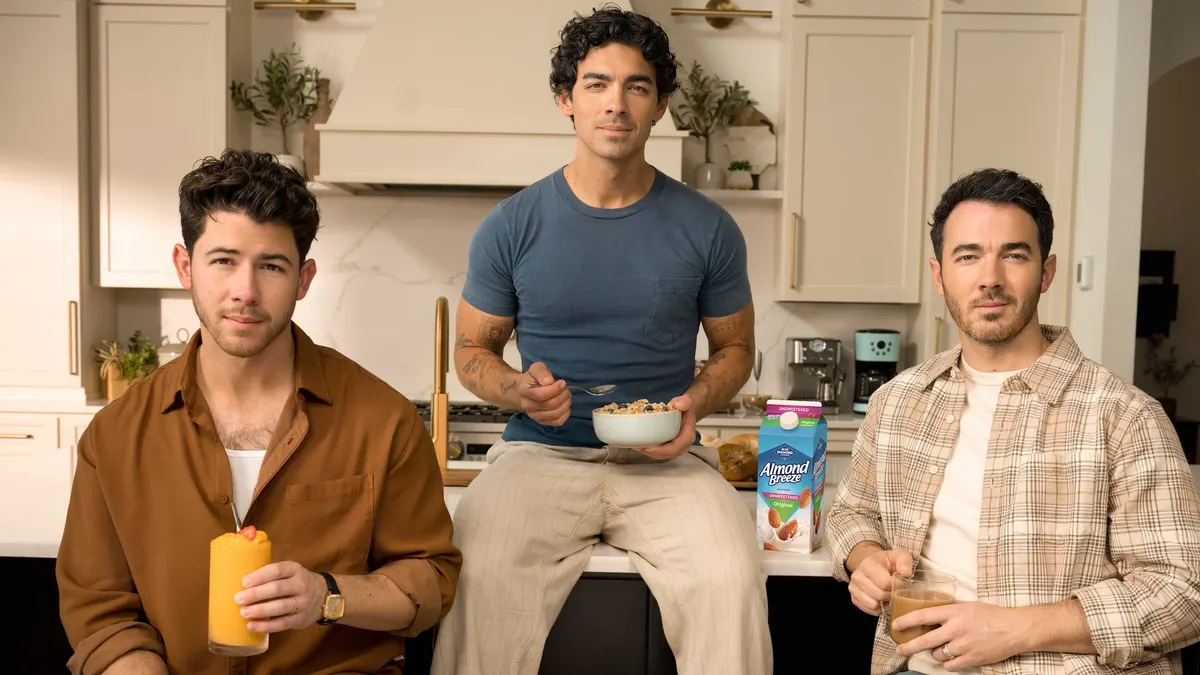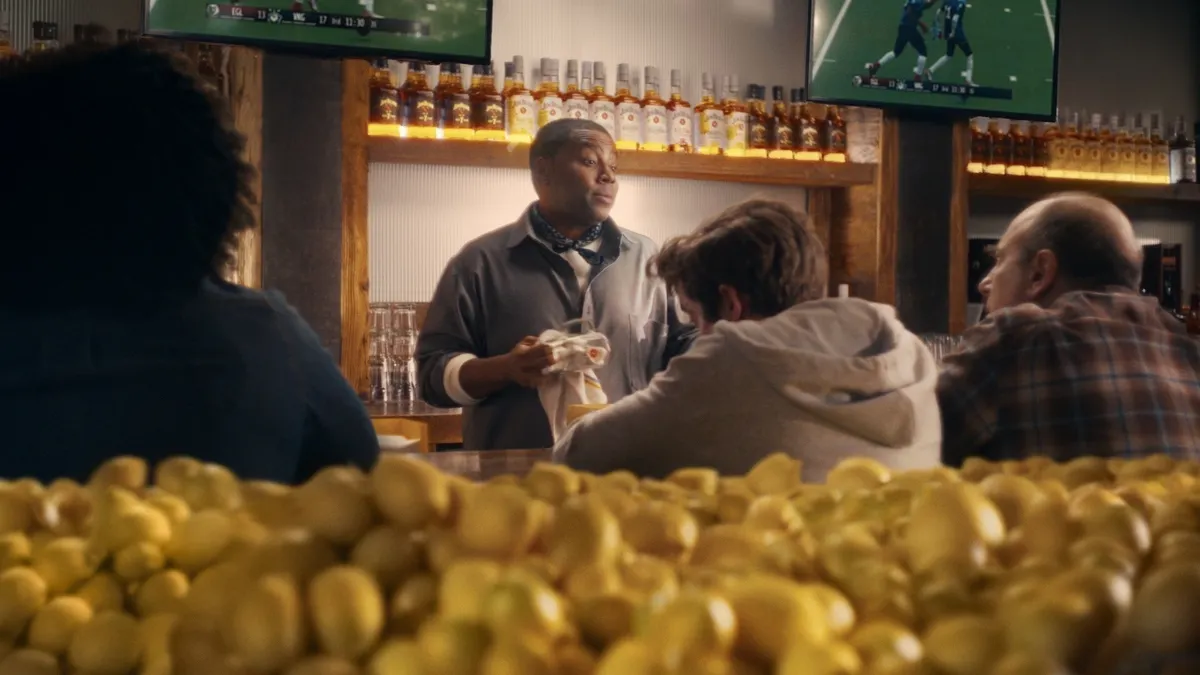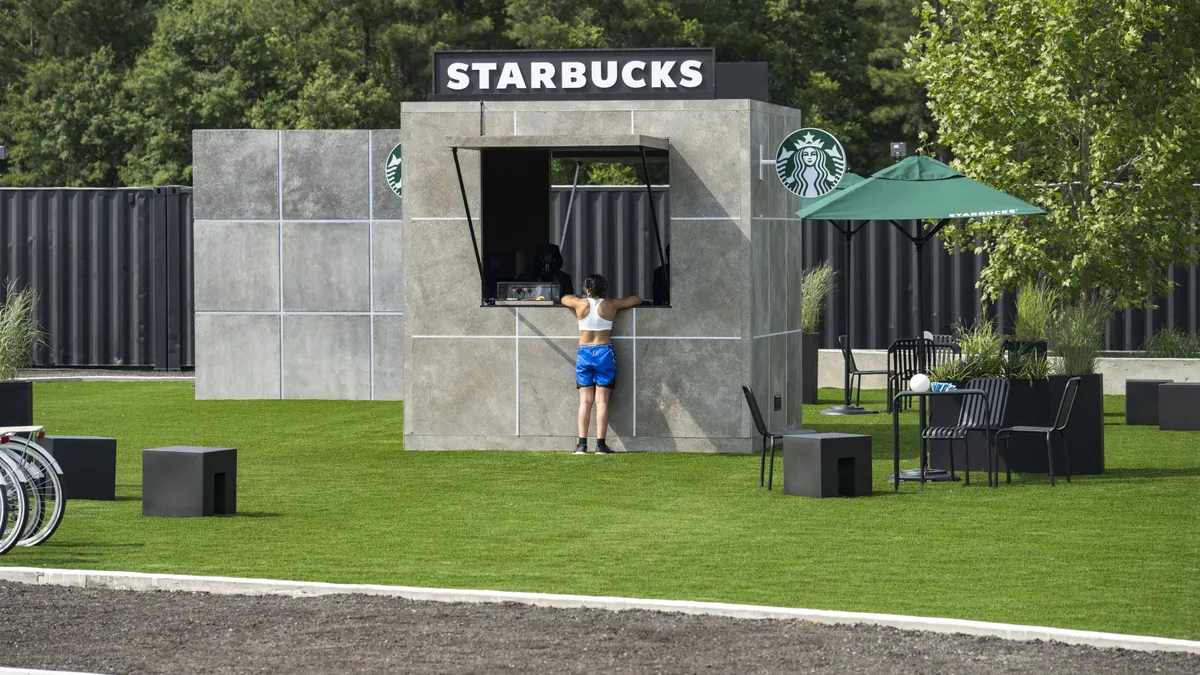Editor's Note: This is part of a series of pieces looking at the year to come that Marketing Dive will publish throughout January. For more on what to expect in the months ahead, check out Esports outlook 2020: What brands need to become winning players and Can revenue-hungry retailers rise to meet digital advertising's opportunity?
Marketers seemed stuck in creative gridlock in 2019, hampered by a lack of bold ideas and innovation. Low levels of risk-taking were understandable, as churn among CMOs created something close to an existential crisis for the industry.
With a heated presidential race, possibility of economic downturn and new levels of maturation in digital advertising on the horizon, volatility in the market is unlikely to cool at the start of a new decade. That means 2020 will be an inflection point where marketers must reaffirm their value by balancing long-term brand-building with the demands of growth, mastering an increasingly complex network of media channels and becoming stewards of critical issues like sustainability and data privacy in the face of tighter regulations.
Failure to reach these benchmarks could result into a further slide toward irrelevance, but there are promising signs that marketers will again steer change — look no further than Coca-Cola, which just resurrected the CMO spot it killed off in 2017, seemingly for good.
Other companies have signaled a return to brand-building after getting lost in the weeds of short-termism, but a path to marketing redemption may not be as straightforward in the era of cord-cutting and advertising aversion. However, destination events, such as the Olympics, will provide stages where truly boundary-pushing live creative can stand out.
"As you look at 2020, brand is maybe more important than ever, but there is a more sophisticated and nuanced approach to brand," Gartner VP Analyst Chris Ross told Marketing Dive, citing higher expectations around areas like data and analytics. "That's what you'll see will shape the behavior of most CMOs."
CMO or not, marketing leaders must step up
From Dunkin' to McDonald's, companies were rocked in 2019 by a wave of CMO departures and role eliminations, stoking fears that the position could be on its last legs. But experts suggested that the CMO decline is potentially overstated or has otherwise been a long time coming. Leaders, then, should focus less on negativity and more on tasks like securing budgets from their boards to thrive in 2020.
"If it's the CMO title or another title, I actually think that's secondary in the grand scheme of things," said Norman Guadagno, CMO of Acoustic. "If the [executive] doesn't have the skills, the insights and the capabilities to understand the full breadth of marketing as a strategic part of the business, then they're going to be left behind."
"The idea of presenting those big brand budgets is in the past."

David Dancer
Inspire, CMO
In 2020, CMOs — or what replaces them — need to adapt not only their consumer strategies, but also how they pitch leadership on winning more resources. A recent Gartner survey found CMO expectations on 2020 budgetary prospects are likely overly confident, especially amid economic uncertainties like Brexit. But marketers could find stronger footing with a results-oriented approach, including for long-view branding projects.
"The idea of presenting those big brand budgets is in the past," said David Dancer, CMO of Inspire, a consumer-focused clean energy firm. "You need to be able to come forth with a full business case thought out, and the specific impact that's measurable."
"Grounding everything you do with a growth lens is what's going to provide the most success," he added.
Another question is how the partitioning of responsibilities will change. Companies like Uber and McDonald's last year saw the duties of the CMO divvied up between new SVP appointments, and Unilever added "digital" to its CMO title. Some of these changes are reactive to trends in tech and data, but they could also be welcoming a new wave of talent.
"We'll see some of this splitting of the role, but I also suspect we'll see the next generation of marketers come along who have been raised completely in a digital universe and who now have the skill set to be fully conversant with a digital marketing world," Guadagno said.
Brand-building resurfaces, but its pillars will shift
There could also be ample opportunities for marketers to prove their worth as developing strong brands becomes paramount in 2020. Many notable brand stewards, including Kraft Heinz, pushed too far toward the performance- and cost-oriented side of the business in recent years, creating disastrous results.
"Companies that focus too much on the short term and ignore the investment in the long-term brand often will pay a price," warned Jed Meyer, Ebiquity's North American managing director.
Prioritizing brand will be crucial to cut through the noise and best digital disruptors. A lack of sturdy brand vision and values can also amplify marketing failures, which are under a harsher spotlight in the age of social media.
"No matter how you feel about, for example, the Peloton ad, everyone's been talking about that," Gartner's Ross said. "The consequences of how that plays and the impact that it can have on your business is substantial."
But the pillars holding up brand will look markedly different in 2020.
"It used to be that brand was largely defined by advertising," said David DeMuth, president and CEO of Doner Advertising. "So much more today, advertising is a component of it, but the experience that people have with your product digitally is becoming a brand-building device."
"Companies that focus too much on the short term and ignore the investment in the long-term brand often will pay a price."

Jed Meyer
Ebiquity, managing director of North America
For destination viewing appointments, as well as in day-to-day strategies, marketers must adopt a more holistic approach to brand-building than before.
"I don't think it looks like big, anthemic TV spots," said Bre Rossetti, EVP of strategy and innovation at Havas Media. "I think it looks like collaboration and partnerships, influencers and editorial."
This newfangled brand-building, though reactive to a swing too far toward the performance end of the spectrum, must maintain a careful balance with performance. Many emergent channels, like streaming or gaming, are difficult to master — but they can also open the window for innovation, as evidenced by the way marketers have embedded themselves in phenomenons like "Stranger Things" or "Fortnite."
"These kinds of ad-free platforms are actually opening up new opportunities for brand building by enabling brands to be present in content and the potential to leverage content that supports their brand values," Lana Busignani, EVP of U.S. Analytics at Nielsen, said in emailed comments.
Amazon skyrockets as threat to ad 'duopoly'
In terms of how older digital players will evolve, Google and Facebook's long-standing dominance of the ecosystem will be disrupted as Amazon continues to create a new triopoly impacting marketers, agencies and ad tech.
While Amazon climbs as a greater threat, its ad sales make up just 4% of revenue — compared with 85% for Google and 94% for Facebook — pointing to room for growth. However, it won't be a zero-sum game as the overall digital advertising bucket grows, according to Brian Wulfe, CEO of digital agency Effective Spend.
"Facebook's growth didn't just take advertising dollars from Google, they took it from traditional advertising and other places as well," Wulfe said.
As Amazon places greater emphasis on advertising and expands its offerings in 2020, brands will have another option for ad placements and will compare the ROI to similar efforts on Google and Facebook. Amazon has already increased the number of ad placements on and off its platform, but despite that expansion, the company still has a finite amount of inventory on its core website, Wulfe added.
"If Walmart, Jet.com, eBay or another site doesn't step up to challenge Amazon, there will be one place for brands to go..."

Brian Wulfe
Effective Spend, CEO
"As the demand continues to grow, that inventory will get significantly more expensive. [Cost-per-click] rates have already grown substantially and are going to keep growing tremendously in 2020," he said. "I anticipate [Amazon] will begin to experiment with new types of ad placements like email promotions to add to the complexity of [its] offerings, particularly to try to bring more big brands on board."
As the digital ad market matures and growth rates dip, Amazon could become more of a pay-to-play platform. Organic reach is declining on established platforms and will likely also decrease for the e-commerce giant, according to Wulfe. This trend will only be exacerbated if Amazon continues to face little direct competition.
"If Walmart, Jet.com, eBay or another site doesn't step up to challenge Amazon, there will be one place for brands to go, and those brands will have to pay to get in front of consumers," he said.
Smaller data firms feel pressure from CCPA
The new year will also bring a new challenge for marketers in the form of the California Consumer Privacy Act (CCPA), which went into effect on Jan. 1. Like the European Union's General Data Protection Regulation, CCPA is expected to have wide-reaching impact on marketers who increasingly rely on data.
"The consumers' right to be forgotten and not have data be sold has downstream, negative impact around certain forms of marketing measurement," Matt Voda, CEO of marketing attribution firm OptiMine Software, told Marketing Dive.
For example, brands attempting to understand ad impressions across devices could face issues with accuracy as consumers opt out from different devices and platforms. This could cause "significant problems" for something like multitouch attribution, Voda said.
However, despite the law's implications, marketers will need to rethink how they approach data-driven personalization — not abandon it entirely due to CCPA.
"Data is at the heart of what marketers are looking to act upon, so there's a continual focus and drumbeat around personalization across all digital touch points," said Jessica Hogue, GM of measurement at Innovid. "I don't see them backing away from that need to respond to their customers. It just comes down to compliance and doing it in a way that respects consumers' privacy."
Large firms will be better resourced to address compliance, with smaller firms feeling the pressure to adapt.
"[S]ome smaller companies will either get folded in to others or buckle under the pressure, which will drive a move to a more consumer friendly, privacy compliant ecosystem," Hogue wrote in a statement.
Media buying's inflection point
The proliferation and maturation of media platforms, including streaming to connected TV, presents its own set of considerations as well. Navigating media buying could become more complex, even as certain areas of the business consolidate, including through the completion of major M&A deals.
"It's no secret that there's more platforms and media partners than ever before," said Jeff Adelson-Yan, president and co-founder of digital marketing firm Levelwing. "The classic case of what we saw on television has certainly happened online, by magnitudes."
Regarding the programmatic sector, marketers continue to sound the need for improvements. A recent survey by the 4A's and consulting firm The 614 Group found that 90% of professionals believe advertising automation must handle more complex media-buying decisions to reach its full potential.
"There's no such monolithic 'in-house.'"

Sherrill Mane
The 614 Group, executive adviser
2020 could create an inflection point as both programmatic solutions and the people applying them either get smart enough to revolutionize the industry or at least evolve more quickly on that path, according to Sherrill Mane, executive adviser at The 614 Group.
"There is starting to be a new narrative in the marketplace, and it's much more value- than cost-focused. I believe that part of it is being driven by the need for transparency, but the other part is also the learning curve," Mane told Marketing Dive. "People are getting accustomed to working in a data-driven, programmatic marketplace."
However, amid fluctuations in brands' in-housing movement and a continued course adjustment for agencies, the best career path for media-buying talent will not always be readily apparent. Upstarts should keep in mind that any one of these branches — client-side, independent or even the holding group route — contain nuances, and that new hybrid models are cropping up as marketers, such as Nestlé, try to maximize efficiency.
"There's no such monolithic 'in-house,'" Mane said, noting that models can differ depending on everything from a marketers' tech stack to control of first-party data.
"There's broad recognition, looking at some of our data, that agencies actually have a centralized role," she added. "There's a highly consultative role for agencies, and I believe that goes outside of what one might think of as consultative."
An event-heavy year yields live TV opportunity
Speaking of media buying, it's all over but the shouting for some old stalwarts: TV ad spending peaked last year and will decline through 2023, according to eMarketer. And while it won't be enough to change the overall trend, election season and the Summer Olympics will result in an ad spend boost of anywhere from 1% (according to eMarketer) to 4% (according to WARC).
"TV ad growth can be heavily impacted by world events, so it's possible that spending could return TV to $72 billion again," eMarketer forecasting director Monica Peart wrote in a blog post. "But it is unlikely that it will exceed that going forward, as ratings and viewership declines accelerate."
With that in mind, 2020's world events should be a target of marketers looking to advertise on live TV. While political campaigns will likely focus on local ad buys, national ads could be a way for brands to counter-program election coverage, moving away from politics as Coke attempted to do over the holidays.
The Olympics will also allow for such campaigns. NBC has sold the Olympics to advertisers as non-political, with NBC executive Dan Lovinger calling them a "unifying event" and a "brand-safe environment," according to Sports Business Daily.
Even though ratings were down in 2016, NBC drawing an average total audience of 25.4 million viewers on broadcast during prime time still represents a massive audience for advertisers in auto, travel, beverage, tech and financial services industries that are expected to spend $1.2 billion this time around.
Sustainability should lead the purpose pack
Teen climate activist Greta Thunberg being named Time's 2019 Person of the Year solidified that tending to the planet's future is top of the agenda for many. Marketers, however, still have a ways to go in addressing how their businesses impact the environment. This is true even as the benefits of developing sustainable strategies proliferate.
"It's a very clear, straight line to understand how sustainability delivers on the collective benefits," Havas Media's Rossetti said. "But I think that brands also need to think through what that means for how they deliver functionally and what the means for the product that they create."
With demands for purposeful brands rising — especially among crucial young audiences like Gen Z — sustainability should take center stage in 2020 messaging strategies. Accenture Interactive's Fjord agency predicts that companies indeed must "radically" realign their business models to think of a greater ecosystem rather than only themselves.
In that regard, simple CSR programs and one-off pledges no longer cut it. There is abundant room for innovation when it comes to breaking with product materials like single-use plastics. Outside factors, including prominent political figures, could add pressure to the push toward sustainability.
"This is something that's going to gain traction in the next year, especially with the backdrop of the way certain political candidates are talking about corporate structure. It's likely that we'll see the rise of B Corporations," Maripat Finigan, VP of creative strategy at Praytell, told Marketing Dive, referencing a private certification that shows a business balances purpose and profit.
An open question around sustainability is how it will be commonly defined. Marketers from Ikea to H&M are pouring resources into climate positivity, but the industry must resist grading its own homework and instead work toward broader standards to adhere to.
"I think that we will see brands and probably categories, in particular, be more transparent in how they are setting goals and being accountable to those for themselves," Rossetti said.

















